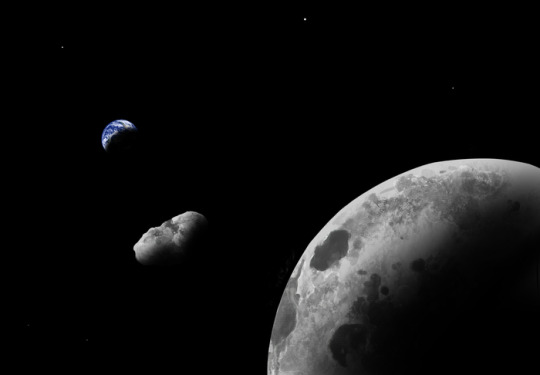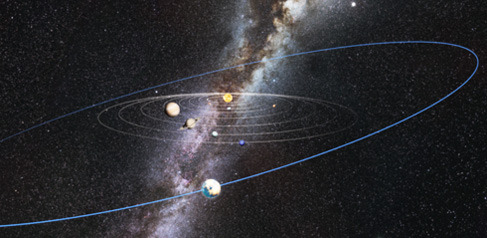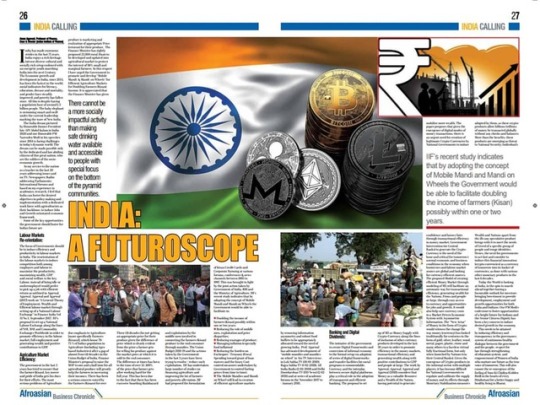#Renu Malhotra
Link
Harsh Beniwal, Mohit Chhikara, Aditya Paul, Vishal Vashishtha, Ahsan Vazir, Rajan Arora, Mukesh Agrohari, Ujjwal Arora, Manoj Chadda, Kunal Dahiya, Prateek Pallav, Komal, Neelam Sharma, Girish Jain, Girish Pal, Renu
#Harsh Beniwal#Mohit Chhikara#Aditya Paul#Vishal Vashishtha#Ahsan Vazir#Rajan Arora#Mukesh Agrohari#Ujjwal Arora#Manoj Chadda#Kunal Dahiya#Prateek Pallav#Komal#Neelam Sharma#Girish Jain#Girish Pal#Renu Malhotra#Priyanka#Vk Sharma#Yogi Rajora#Garvit Jain#Harsh Sagar#Anshul Narain#Avi Singh#Sristri Thapa#Ansh Tyagi#Meghana Yadav
0 notes
Text
ICSET -2023



We are excited to announce that Faculty members, Ass. Prof VIMMI MALHOTRA, Dr. ASHIMA MEHTA, Ass. Prof RENU NARWAL , Faculty of Dronacharya College of Engineering, Gurugram joined the Researchfora International Conference on Science, Engineering & Technology - ICSET 2023, held in Dubai, United Arab Emirates on 26th- 27th March, 2023 as a Technical Session Chair and Invited Keynote Speakers at Grand Central Hotel Dubai.
#internationalconference#internationaljournal#science#engineering#technology#ICSET2023#techniques#Dubai#UAE#engineeringstudents#college#qualityeducation#knowledge#learning#future#cbseboard2023#delhincr#aicte#g20#topprivateengineeringcollegeingurugram#bestengineeringcollegeindelhincr#DronacharyaCollegeofEngineering#multipleplacement#gurugram#haryana
2 notes
·
View notes
Text
Distinguished Women Honored at the 7th Dr. Sarojini Naidu International Awards

Noida: A magnificent tribute to the remarkable achievements of a hundred exceptional women, hailing from India and across the globe, unfolded at the 7th Dr. Sarojini Naidu International Awards hosted at Marwah Studios in the vibrant Film City of Noida. These prestigious awards, thoughtfully orchestrated by the visionary Dr. Sandeep Marwah, celebrated the invaluable contributions women have made across a spectrum of diverse fields.
Dr. Sandeep Marwah, the driving force behind these honors, underscored the pivotal role of empowering and recognizing women’s substantial contributions in various domains. He stressed that providing unwavering support and encouragement for women is not just essential but critical in helping them thrive in every facet of life.
The distinguished guest of the evening, H.E. Lalatianna Accouche, the High Commissioner of Seychelles, gracefully accepted her award and delivered an inspiring message to the audience, predominantly composed of women. She emphasized that any pursuit, when driven by a clear intent, will undoubtedly yield positive results. Her presence and words resonated deeply, serving as a powerful source of motivation for the other one hundred accomplished women honored during the ceremony.
Among the awardees, Aji Fatou Joof, the First Secretary of the Embassy of Gambia, expressed her heartfelt gratitude for Dr. Marwah’s visionary initiative in establishing these remarkable awards. She highlighted the profound impact of recognizing and appreciating women’s efforts, underscoring how such accolades play a pivotal role in supporting and inspiring women to ascend to new heights.
Renu Bhatia, an alumna of the esteemed Asian Academy of Film and Television (AAFT) and Chair of the Women Commission in the Government of Haryana, was not only recognized but also bestowed with life Membership of the International Women’s Film Forum. In her eloquent address, she conveyed that women are inherently empowered and do not need empowerment per se; rather, they require unwavering encouragement and support to carve their unique paths and shape their destinies.
These prestigious awards were conferred upon a hundred remarkable women hailing from diverse backgrounds, spanning the realms of business, art, culture, fashion, law, media, cinema, management, administration, poetry, writing, science, research, event management, education, and social work. Each recipient’s name serves as a testament to their outstanding accomplishments and unwavering commitment to the betterment of society.
The list of awardees also included Vibha Tyagi, Vertica Dewedi, Vanta Arya, V. Suparbha, Sweta Prasad Verma, Sushma Kaneri, Sudha Upadhyay, Sonia Sharma, Sneha Vishwakarma, Sneha Viresh Bagdiya,Smruti P Jadhav, Shruti Sinha, Shalini Mittal, Seema Malhotra, Satarupa Otne, Sangita Chatterji, Rupam Lal, Ruchi Akshay, Rozy Sharma, Rinkal Sharma, Richa Singh, Rekha Yadav.Rashmi Upadhyay, Rashmi Mishra and many more.
#Hundered Women Honored with Dr Sarojni Naidu International Award for Working Women#Dr. Sandeep Marwah President of AAFT
0 notes
Photo

A chunk of the moon appears to be orbiting near Earth, new study suggests | Live Science
Astronomers have found more evidence that a near-Earth asteroid is an ejected chunk of the moon.
The asteroid Kamo'oalewa — a Hawaiian name that means "the oscillating fragment" — is a Ferris-wheel-size rock chunk that orbits within 9 million miles (14.4 million kilometers) of Earth every April.
Since the object's discovery in 2016, scientists have puzzled over the strange rock's origins, and they were surprised when a 2021 analysis revealed that Kamo'oalewa's composition is similar to the moon's.
Now, a new study, published Oct. 23 in the journal Communications Earth & Environment, describes a feasible way that an ancient asteroid impact could have shunted the space rock onto its current trajectory and suggests there could be more moon chunks floating around the solar system.
"We are now establishing that the moon is a more likely source of Kamo'oalewa," lead author Renu Malhotra, a planetary scientist at the University of Arizona, said in a statement. ...
1 note
·
View note
Text

Some astronomers believe an undiscovered planet, some six times the mass of Earth, is lurking in the outer reaches of the solar system. Caltech/R. Hurt (IPAC)
Planet 9 May Be Closer and Easier to Find Than Thought—If it Exists
A new study's "treasure map" suggests that a planet several times more massive than Earth could be hiding in our solar system, camouflaged by the bright strip of stars that make up the Milky Way.
— By Nadia Drake | August 31, 2021
Among the solar system’s more intriguing mysteries is whether a large, icy planet lives in the outer regions of our cosmic neighborhood, well beyond the orbit of Neptune. This hypothetical world, nicknamed “Planet Nine” by some of the scientists searching for it, has stirred up controversy since it was first proposed.
The unseen planet is predicted to exist based on its apparent gravitational influence on a group of small objects with odd, clustered orbits. But so far, searches for it have come up empty, and critics contend that the hints of its presence are just ghosts in the data.
Now, a new analysis predicts that if it’s out there, that skulking planet could be closer, brighter, and easier to spot than previously estimated.
Instead of orbiting our home star once every 18,500 years, astronomers calculate that it loops around the sun in about 7,400 years. That tighter orbit brings it much closer to the sun than previously expected, which means that Planet Nine may appear brighter to Earth-based telescopes.
“I think it’s within a year or two from being found,” says Mike Brown, an astronomer at the California Institute of Technology and an author of the new study, which has been accepted for publication in the Astronomical Journal. But, he adds, “I’ve made that statement every year for the past five years. I am super-optimistic.”
Brown’s latest analyses of Planet Nine’s gravitational shenanigans, calculated with his Caltech colleague Konstantin Batygin, suggest that the world is roughly six times as massive as Earth—which would likely make it either a rocky super-Earth or a gaseous mini-Neptune. If discovered, the planet would be the first large world to join the solar system’s cast of characters since 1846, when astronomers announced the discovery of Neptune—an ice giant whose presence was forecast by its gravitational influence on Uranus.
But over the years, skeptics have suggested that the gravitational signatures betraying Planet Nine’s presence are nothing more than observational artifacts. The apparent clustering of distant objects’ orbits doesn’t reflect the influence of an unseen world, critics argue, and is instead the result of natural biases in sky surveys.
“Most of these objects are discovered with large telescopes that have limited time for surveys of the outer solar system, and they look in the places they can look, which depends on where they are located,” says Renu Malhotra of the University of Arizona, who is agnostic about the planet’s existence and is working on her own estimates of its position. Astronomers have so far discovered only a handful of these distant objects, and without a more complete census of the outer solar system, it’s tough to tell whether these small, icy objects are truly behaving strangely, or are randomly distributed.
To aid searchers in the meantime, Brown and Batygin used their revised calculations to make a “treasure map” that points to a swath of sky where Planet Nine is most likely to be found. That area crosses the densely populated, sparkling plane of the Milky Way, which could have helped the planet hide during past searches.
“Now we really know where to look, and where not to look,” Brown says. “This should do it—unless we did something wrong.”
Ghost Planets in the Far Solar System
Brown and Batygin originally announced their prediction of Planet Nine in 2016, but the pair is hardly the first to suggest that an undiscovered world is hiding in the solar system’s backcountry. For more than a century, astronomers have mused about such a planet, erroneously believing that something hefty was perturbing Neptune’s orbit. Astronomer Percival Lowell called the world Planet X and was so intent on finding it that he left a million dollars to fund the continuing search after his death in 1916. (In 1930, the Lowell Observatory’s Clyde Tombaugh found little Pluto instead.)
The Caltech team based their prediction of Planet Nine’s existence on how it apparently perturbs a group of Kuiper Belt Objects, or KBOs. These small, icy worlds beyond Neptune include a population of objects with extreme orbits that take them at least 150 times farther from the sun than Earth’s orbit.
In 2016, Batygin and Brown scrutinized six of those objects, whose oblong, tilted orbital paths have confounded scientists for years. The team concluded that an unseen planet about 10 times as massive as Earth must be gravitationally shepherding the objects onto their catawampus trajectories. The planet’s estimated mass sits between Earth and Neptune, making it a type of world that appears to be common throughout the galaxy, based on surveys of planets orbiting other stars, yet is conspicuously absent in our own solar system.
Soon after the announcement, though, astronomers began casting doubts on the Planet Nine hypothesis. Chief among their concerns was that the peculiar clustering of orbits might not be clustering at all. Instead, over the past five years, multiple teams using a variety of data sets have repeatedly concluded that the evidence pointing to Planet Nine is nothing more than an observational artifact.
Perhaps Planet Nine is an apparition, its supposed gravitational handiwork a false signature created by a small number of misleading data points. Astronomers are still working on resolving the controversy, and this latest analysis from Brown and Batygin is one attempt to do that.
“Good on them for making a detailed prediction and putting it out there,” says the University of Canterbury’s Michele Bannister, whose work challenged the Planet Nine hypothesis in 2017. “I will be very delighted if this thing turns out to exist—it’ll be a fun solar system to live in.”
Refining the search
Brown and Batygin based their newest predictions of Planet Nine’s size and orbit on a slightly different set of objects. Some of the original KBOs remain in their data set, but the team added new ones and threw out any objects whose orbits appeared to be influenced by Neptune’s gravity. In the end, they worked with 11 KBOs.
“If you include the Neptune ones you’ll fuzz out your signal and won’t know what’s going on,” Brown says.
The new study finds that there’s a 99.6 percent chance that the peculiar orbital alignments of these objects are the work of an unseen planet and not random chance. That sounds pretty good, Malhotra says, but it means that there’s a 1-in-250 chance the alignments are a fluke—which is much greater than the 1-in-10,000 chance Brown and Batygin published in 2016.
Still, Malhotra says the new analysis is an improvement on previous work, even if it is based on a small number of objects. “It’s intriguing enough that we should look, but it’s not convincing,” she says.
Batygin also ran a heap of simulations to predict the characteristics of whatever world might be sculpting those 11 orbits—chiefly, its location and mass. The end result is the “treasure map” pointing to Planet Nine’s orbit on the sky—although the team still has no idea where the planet could be along that path.
Although it’s now estimated to be smaller—roughly five or six times Earth’s mass rather than 10—the planet is also apparently closer. This means Planet Nine should be brighter in the sky, although Brown points out that the planet’s estimated brightness is based on assumptions about its composition, which could be wrong.
The new predictions bring the hypothetical world more in line with a similar claim made by astronomers Chad Trujillo and Scott Sheppard. In 2014, that team reported the discovery of an object called 2012 VP113, which they jokingly nicknamed “Biden” after then U.S. Vice President Joe Biden. They suggested that a faraway world five times as massive as Earth could be nudging Biden and several other distant objects into clustered trajectories.
But despite the converging hypotheses, experts in the field are nowhere close to reaching a consensus about Planet Nine’s existence.
“Overall, it’s held up surprisingly well for something that hasn’t been found,” says Greg Laughlin, an astronomer at Yale University. “I feel like there’s a strong and interesting case—but it’s like, why haven’t they found it? And where is it?”
Finding Planet Nine
The fact that scientists haven’t yet set eyes on Planet Nine could suggest that if it exists, the world is positioned near the farthest reaches of its orbit, making it a faint, slowly moving target that’s hiding in starlight. Brown and Batygin, plus Sheppard and Trujillo, are using the powerful Subaru telescope situated atop Hawaii’s Mauna Kea to hunt for the elusive planet. But even with the sharpest tools in astronomers’ arsenal, the search is challenging.
At its surmised brightness and orbit, Planet Nine inconveniently blends into the glittering masses of background stars—a world adrift amid the milky streamer of our galaxy in the nighttime sky.
“It’s bright enough and close enough and prominent enough that that’s basically the only region where it could lurk undetected,” Laughlin says. “My sense is that if it’s there, it’s going to be pinned down pretty quickly.”
Sifting through starfields using Subaru isn’t the only way astronomers could pin the planet on the sky. NASA’s Transiting Exoplanet Survey Satellite (TESS), which is busy searching for planets orbiting other stars, may catch sight of Planet Nine as it scans areas that include the planet’s supposed orbit.
In 2019, astronomers suggested that clever data processing could pull faraway solar system objects from TESS observations—a technique that Laughlin and Yale University’s Malena Rice are currently working on.
“I’m not putting super-high odds on this, but it’s by no means impossible that TESS frames could reveal an object if it’s there,” Laughlin says. “Every so often, something that’s so amazing that it normally doesn’t happen, does happen.”
Many astronomers agree that planet hunters’ most likely chance of finding Planet Nine is the Vera Rubin Observatory, currently under construction atop a Chilean mountaintop. This 8.4-meter telescope with an enormous field of view will photograph the entire visible sky every few nights. Starting in 2023, the observatory will let astronomers track the movements of millions of celestial objects, including space junk, asteroids, comets, spy telescopes, stars, and maybe even Planet Nine.
“Vera Rubin will cover about two-thirds of the sky, but it will cover that sky uniformly and repeatedly,” Malhotra says. “It will really help us make some big advances in this type of problem.”
Brown thinks the planet could turn up before fancy, next-generation telescopes come online—perhaps, he says, the stealthy world is lurking in data that astronomers already have in hand.
“I would be willing to bet—and I often lose bets—that images of it exist in surveys that we already have,” Brown says. “I don’t think anything has been discovered that was not later found in existing data, starting with Uranus, all the way to Pluto and Eris.” Brown discovered the dwarf planet Eris at the Palomar Observatory in 2005, and he later found that the earliest image of it was on a photographic plate made by the same telescope in 1955. “I just have this feeling that it’s going to happen again.”
— The National Geographic
0 notes
Text
100 Richest Women Announced By Kotak-Hurun India
100 Richest Women Announced By Kotak-Hurun India
Here’s a list of India’s 10 richest women announced by Kotak-Hurun India

From left: Roshni Nadar Malhotra and Kiran Mazumdar-Shaw
1. Roshni Nadar Malhotra (HCL Technologies)
2. Kiran Mazumdar-Shaw (Biocon)
3. Leena Gandhi Tewari (USV)
4. Nilima Motaparti (Divi’s Laboratories)
5. Radha Vembu (Zoho)
6. Jayshree Ullal (Arista Networks)
7. Renu Munjal (Hero FinCorp)
8. Malika Chirayu Amin (Alembic…
View On WordPress
0 notes
Photo

PLANET X IS OUT THERE
Maybe not the Planet X / Nibiru of conspiracy theories or Godzilla movies, but a Mars-sized planet lurking in the Kuiper Belt, distinct from the much larger Planet 9 that’s also been detected but never observed.
A mysterious celestial body may be lurking in the frozen, far-flung reaches of the solar system, scientists say.
University of Arizona astronomers Kat Volk and Renu Malhotra say it's a Mars-sized body in the Kuiper belt, a swarm of small icy objects that extends beyond the orbit of Pluto. If both the Arizona and Caltech researchers are right, then these proposed bodies could bring the total number of planets in our solar system to 10.
Volk and Malhotra haven't seen their new planet, but they say they can sense its presence.
155 notes
·
View notes
Text
Planet Nine hypothesis supported by new evidence
Last year, the existence of an unknown planet in our Solar system was announced. However, this hypothesis was subsequently called into question as biases in the observational data were detected. Now Spanish astronomers have used a novel technique to analyse the orbits of the so-called extreme trans-Neptunian objects and, once again, they point out that there is something perturbing them: a planet located at a distance between 300 to 400 times the Earth-Sun separation.

Scientists continue to argue about the existence of a ninth planet within our Solar System. At the beginning of 2016, researchers from the California Institute of Technology (Caltech, USA) announced that they had evidence of the existence of this object, located at an average distance of 700 AU or astronomical units (700 times the Earth-Sun separation) and with a mass ten times that of Earth.
Their calculations were motivated by the peculiar distribution of the orbits found for the trans-Neptunian objects (TNO) of the Kuiper belt, which apparently revealed the presence of a Planet Nine or X in the confines of the Solar System.
However, scientists from the Canadian-French-Hawaiian project OSSOS detected biases in their own observations of the orbits of the TNOs, which had been systematically directed towards the same regions of the sky, and considered that other groups, including the Caltech group, may be experiencing the same issues. According to these scientists, it is not necessary to propose the existence of a massive perturber (a Planet Nine) to explain these observations, as these are compatible with a random distribution of orbits.
Now, however, two astronomers from the Complutense University of Madrid have applied a new technique, less exposed to observational bias, to study a special type of trans-Neptunian objects: the extreme ones (ETNOs, located at average distances greater than 150 AU and that never cross Neptune's orbit). For the first time, the distances from their nodes to the Sun have been analysed, and the results, published in the journal 'MNRAS: Letters', once again indicate that there is a planet beyond Pluto.
The nodes are the two points at which the orbit of an ETNO, or any other celestial body, crosses the plane of the Solar System. These are the precise points where the probability of interacting with other objects is the largest, and therefore, at these points, the ETNOs may experience a drastic change in their orbits or even a collision.
Like the comets that interact with Jupiter
"If there is nothing to perturb them, the nodes of these extreme trans-Neptunian objects should be uniformly distributed, as there is nothing for them to avoid, but if there are one or more perturbers, two situations may arise," explains Carlos de la Fuente Marcos, one of the authors. "One possibility is that the ETNOs are stable, and in this case they would tend to have their nodes away from the path of possible perturbers, he adds, but if they are unstable they would behave as the comets that interact with Jupiter do, that is tending to have one of the nodes close to the orbit of the hypothetical perturber."
Using calculations and data mining, the Spanish astronomers have found that the nodes of the 28 ETNOs analysed (and the 24 extreme Centaurs with average distances from the Sun of more than 150 AU) are clustered in certain ranges of distances from the Sun; furthermore, they have found a correlation, where none should exist, between the positions of the nodes and the inclination, one of the parameters which defines the orientation of the orbits of these icy objects in space.
"Assuming that the ETNOs are dynamically similar to the comets that interact with Jupiter, we interpret these results as signs of the presence of a planet that is actively interacting with them in a range of distances from 300 to 400 AU," says De la Fuente Marcos, who emphasizes: "We believe that what we are seeing here cannot be attributed to the presence of observational bias."
Until now, studies that challenged the existence of Planet Nine using the data available for these trans-Neptunian objects argued that there had been systematic errors linked to the orientations of the orbits (defined by three angles), due to the way in which the observations had been made. Nevertheless, the nodal distances mainly depend on the size and shape of the orbit, parameters which are relatively free of observational bias.
"It is the first time that the nodes have been used to try to understand the dynamics of the ETNOs," the co-author points out, as he admits that discovering more ETNOs (at the moment, only 28 are known) would permit the proposed scenario to be confirmed and subsequently constrain the orbit of the unknown planet via the analysis of the distribution of the nodes.
The authors note that their study supports the existence of a planetary object within the range of parameters considered both in the Planet Nine hypothesis of Mike Brown and Konstantin Batygin from Caltech, and in the original one proposed in 2014 by Scott Sheppard from the Carnegie Institute and Chadwick Trujillo from the University of North Arizona; in addition to following the lines of their own earlier studies (the latest led by the Instituto de Astrofísica de Canarias), which suggested that there is more than one unknown planet in our Solar System.
Is there also a Planet Ten?
De la Fuente Marcos explains that the hypothetical Planet Nine suggested in this study has nothing to do with another possible planet or planetoid situated much closer to us, and hinted at by other recent findings. Also applying data mining to the orbits of the TNOs of the Kuiper Belt, astronomers Kathryn Volk and Renu Malhotra from the University of Arizona (USA) have found that the plane on which these objects orbit the Sun is slightly warped, a fact that could be explained if there is a perturber of the size of Mars at 60 AU from the Sun.
"Given the current definition of planet, this other mysterious object may not be a true planet, even if it has a size similar to that of Earth, as it could be surrounded by huge asteroids or dwarf planets," explains the Spanish astronomer, who goes on to say: "In any case, we are convinced that Volk and Malhotra's work has found solid evidence of the presence of a massive body beyond the so-called Kuiper Cliff, the furthest point of the trans-Neptunian belt, at some 50 AU from the Sun, and we hope to be able to present soon a new work which also supports its existence."
63 notes
·
View notes
Photo

New Evidence Points to a Tenth Planet in Our Solar System
Last year, scientists at the California Institute of Technology proposed that there might be a true Planet Nine.
in our Solar System. The team asserted that it appears to be 10 times the mass of Earth and that it is hiding out in the remote recesses of our Solar System - well beyond the orbit of Pluto.
At the time of the discovery, Mike Brown, who was behind the work, noted that the existence of a 9th planet is extremely likely: "Hey Planet Nine fans, a new eccentric KBO was discovered. And it is exactly where Planet Nine says it should be," Brown tweeted.
Similar discoveries have been made in relation to new dwarf planets. Located about 13.7 billion kilometres (8.5 billion miles) from the Sun, 2014 UZ224 measures about 530 kilometres (330 miles) in diameter and takes around 1,100 Earth years to complete its orbit.
And so, our little corner of the cosmos has been in quite the state of flux.
But it appears that there may be more surprises lying in wait at the edge of our Solar System.
Kathryn Volk and Renu Malhotra at the University of Arizona have noticed some strange movement out in the Kuiper belt…movement that they believe could suggest the existence of a tenth planet...
(read more: Science Alert)
40 notes
·
View notes
Photo

Near-earth asteroid might be a lost fragment of the moon A team of UArizona-led researchers think that the near-Earth asteroid Kamo`oalewa might actually be a miniature moon A near-Earth asteroid named Kamo`oalewa could be a fragment of our moon, according to a new paper published in Nature Communications Earth and Environment by a team of astronomers led by the University of Arizona. Kamo`oalewa is a quasi-satellite – a subcategory of near-Earth asteroids that orbit the sun but remain relatively close to Earth. Little is known about these objects because they are faint and difficult to observe. Kamo`oalewa was discovered by the PanSTARRS telescope in Hawaii in 2016, and the name – found in a Hawaiian creation chant – alludes to an offspring that travels on its own. The asteroid is roughly the size of a Ferris wheel – between 150 and 190 feet in diameter – and gets as close as about 9 million miles from Earth. Due to its orbit, Kamo`oalewa can only be observed from Earth for a few weeks every April. Its relatively small size means that it can only be seen with one of the largest telescopes on Earth. Using the UArizona-managed Large Binocular Telescope on Mount Graham in southern Arizona, a team of astronomers led by planetary sciences graduate student Ben Sharkey found that Kamo`oalewa's pattern of reflected light, called a spectrum, matches lunar rocks from NASA's Apollo missions, suggesting it originated from the moon. The team can't yet be sure how it may have broken loose. The reason, in part, is because there are no other known asteroids with lunar origins. "I looked through every near-Earth asteroid spectrum we had access to, and nothing matched," said Sharkey, the paper's lead author. The debate over Kamo`oalewa's origins between Sharkey and his adviser, UArizona associate professor Vishnu Reddy, led to another three years of hunting for a plausible explanation. "We doubted ourselves to death," said Reddy, a co-author who started the project in 2016. After missing the chance to observe it in April 2020 due to a COVID-19 shutdown of the telescope, the team found the final piece of the puzzle in 2021. "This spring, we got much needed follow-up observations and went, 'Wow it is real,'" Sharkey said. "It's easier to explain with the moon than other ideas." Kamo`oalewa's orbit is another clue to its lunar origins. Its orbit is similar to the Earth's, but with the slightest tilt. Its orbit is also not typical of near-Earth asteroids, according to study co-author Renu Malhotra, a UArizona planetary sciences professor who led the orbit analysis portion of the study. "It is very unlikely that a garden-variety near-Earth asteroid would spontaneously move into a quasi-satellite orbit like Kamo`oalewa's," she said. "It will not remain in this particular orbit for very long, only about 300 years in the future, and we estimate that it arrived in this orbit about 500 years ago," Malhotra said. Her lab is working on a paper to further investigate the asteroid's origins. Kamo`oalewa is about 4 million times fainter than the faintest star the human eye can see in a dark sky. "These challenging observations were enabled by the immense light gathering power, of the twin 8.4-meter telescopes of the Large Binocular Telescope," said study co-author Al Conrad, a staff scientist with the telescope. The study also included data from the Lowell Discovery Telescope in Flagstaff, Arizona. Other co-authors on the paper include Olga Kuhn, Christian Veillet, Barry Rothberg and David Thompson from the Large Binocular Telescope; Audrey Thirouin from Lowell Observatory and Juan Sanchez from the Planetary Science Institute in Tucson. The research was funded by NASA's Near-Earth Object Observations Program. IMAGE....An artist impression of Earth quasi-satellite Kamo`oalewa near the Earth-Moon system. Astronomers using the Large Binocular Telescope have shown that it might be a lost fragment of the Moon. CREDIT Addy Graham/University of Arizona
0 notes
Text
International Conference








International Conference on “Science, Engineering & Technology- ICSET, 2023” in conjunction with International Journal on Recent and Innovation Trends in Computing and Communication was organized by ResearchFora on 26th – 27th March, 2023 at DUBAI, UAE.
Our Students Mayank, Sanskriti, Ankit, Tushar, Suraj, Samajhana, Utkarsh and Kushagra attended and presented the research paper in the conference along with their mentors Dr. Ashima Mehta, Ms. Vimmi Malhotra and Ms. Renu Narwal who were invited as Keynote speaker as well.
The objective of conference was to bring together researchers, education scientists, technologists and industry representatives who were experts in security, AI and Optimization Techniques.
#internationalconference#internationaljournal#science#engineering#technology#ICSET2023#innovation#trends#computing#communication#Researchfora#researchers#educationscientists#technologies#techniques#Dubai#UAE#delhincr#aicte#g20#topprivateengineeringcollegeingurugram#bestengineeringcollegeindelhincr#DronacharyaCollegeofEngineering#multipleplacement#gurugram#haryana
1 note
·
View note
Text
7th Dr Sarojini Naidu International Awards Honor One Hundred Outstanding Women at Marwah Studios

Noida: In a remarkable celebration of the achievements and contributions of women, one hundred exceptional working women from India and abroad were recognized and celebrated with the prestigious 7th Dr. Sarojini Naidu International Awards. The gala event took place at Marwah Studios in Film City, Noida, under the auspices of Dr. Sandeep Marwah, Chair for the Dr. Sarojini Naidu International Awards.
Dr. Sandeep Marwah, the visionary behind these awards, emphasized the importance of encouraging women and recognizing their immense contributions across various fields. He noted, “It is not only necessary but essential to encourage women; their contribution is immense and can rise to many folds if women are encouraged to come and work at every platform.”
The chief guest of the evening, H.E. Lalatianna Accouche, High Commissioner of Seychelles, graciously accepted her award and shared motivational words with the gathered audience of women. She stated, “Any work with a clear intention is going to bring back results.” Her presence and words served as an inspiration to the other one hundred women honored during the ceremony.
The First Secretary of the Embassy of Gambia, Aji Fatou Joof, also received an award and expressed her appreciation for Dr. Marwah’s initiative in starting these remarkable awards. She highlighted the profound impact of recognizing and appreciating the efforts of women and emphasized how such awards play a significant role in supporting and motivating women.
An alumna of the Asian Academy of Film and Television (AAFT) and Chair of the Women Commission in the Government of Haryana Renu Bhatia was presented with Life Membership of International Women’s Film Forum. She eloquently pointed out that women do not need empowerment as they are already empowered. Instead, they need encouragement and support to create their own paths and shape their destinies.
The awards were presented to one hundred remarkable women from various backgrounds, including business, different professions like art, culture, fashion, law, media, cinema, management, administration, poetry, writing, science, research, event management, education, and social work. Each awardee’s name is a testament to their individual accomplishments and dedication to society.
The esteemed recipients of the 7th Dr. Sarojini Naidu International Awards included Aarti Agarwal, Abhilasha Pattnaik, Rekha Shukla, Seema Patnaha, Anjali Rohan, Anju Malhotra, Annu Kalra, Anupma Bhardhwaj, Aparna Singh, Archana Singh, Bharti Kakwani, Chanchal Bhargava, Deepali Gupta, Deepali Roongta, Deepanshi Nandi, Deepti Gupta, Divya Bhatia, Dr. APS Gandhimathy, Aarti Agarwal, Abha Yadav, Anita Sharma, Anju Malik, Divya Goel, Divya Kirti Gupta, Geeti Sharma, Hemlata Gandhi, Keerthi Bollineni, Komal Jain, Kuljeit Uppal Mala Bhandari, Mamta Singh, Mamta Rani Kaushik, Mamta Singla, Namrata Kothari, Nidhi Menon, Payal Anwar, Priyambada Sarangi, Pulin Saluja, Radha Maddisetty, Rajshree Katke, Rakhi Singh, Ranjana Kaul, Richa Choudhary, Sarika Takhar, Seema Aseem Saxena, Shelly Bisht, Shernaaz Cama, Parul Purohit, Geet Mala Jalota, Gouri Kalra, Gouri Sahni, Harisoa Lalatina, Hema Paul, Hemangini Sudhir Patankar, and many more.
This illustrious event celebrated the accomplishments of women across a multitude of fields, reinforcing the message that women are powerful contributors to society and deserve recognition for their invaluable work. The event was supported by AAFT University, International Chamber of Media and Entertainment Industry, International Women’s Film Forum, Asian Academy of Arts and World Peace Development and Research Foundation.
#Chancellor Sandeep Marwah Presenting Sarojni Naidu Awards to Working Women#Dr. Sandeep Marwah President of Marwah Studios
0 notes
Text
New Evidence Points to a Tenth Planet in Our Solar System
See on Scoop.it - Knowmads, Infocology of the future

The Solar System hasn't been the same since Pluto was downgraded from a planet to a dwarf planet, and all bets have been off since this monumental decision.
Case in point, last year, scientists at the California Institute of Technology proposed that there might be a true Planet Nine in our Solar System. The team asserted that it appears to be 10 times the mass of Earth and that it is hiding out in the remote recesses of our Solar System - well beyond the orbit of Pluto.
At the time of the discovery, Mike Brown, who was behind the work, noted that the existence of a 9th planet is extremely likely: "Hey Planet Nine fans, a new eccentric KBO was discovered. And it is exactly where Planet Nine says it should be," Brown tweeted.
Furthermore, he says, the new object "takes the probability of this being a statistical fluke down to ~.001 percent or so."
Similar discoveries have been made in relation to new dwarf planets. Located about 13.7 billion kilometres (8.5 billion miles) from the Sun, 2014 UZ224 measures about 530 kilometres (330 miles) in diameter and takes around 1,100 Earth years to complete its orbit.
And so, our little corner of the cosmos has been in quite the state of flux.
But it appears that there may be more surprises lying in wait at the edge of our Solar System.
Kathryn Volk and Renu Malhotra at the University of Arizona have noticed some strange movement out in the Kuiper belt…movement that they believe could suggest the existence of a tenth planet.
18 notes
·
View notes
Text
Scientists Say the Discovery of ‘Planet 9′ is Right Around the Corner

Artist's illustration of Planet Nine, a world about 10 times more massive than Earth that may lie undiscovered in the outer solar system.(Image: © Caltech/R. Hurt (IPAC))
Planet Nine's days of lurking unseen in the dark depths of the outer solar system may be numbered.
The hypothetical giant planet, which is thought to be about 10 times more massive than Earth, will be discovered within 16 months or so, astronomer Mike Brown predicted.
"I'm pretty sure, I think, that by the end of next winter — not this winter, next winter — I think that there'll be enough people looking for it that … somebody's actually going to track this down," Brown said during a news conference Wednesday (Oct. 19) at a joint meeting of the American Astronomical Society's Division for Planetary Sciences (DPS) and the European Planetary Science Congress (EPSC) in Pasadena, California. Brown said that eight to 10 groups are currently looking for the planet.
At the "next one of these [DPS-EPSC meetings], we'll be talking about finding Planet Nine instead of just looking for it," added Brown, who's based at the California Institute of Technology (Caltech) in Pasadena.
That would be a pretty quick path from hypothetical planet to confirmed world. The existence of Planet Nine was seriously proposed for the first time just in 2014, by astronomers Scott Sheppard and Chadwick Trujillo, of the Carnegie Institution for Science in Washington, D.C., and the Gemini Observatory in Hawaii, respectively.
Sheppard and Trujillo noted that the dwarf planet Sedna, the newfound object 2012 VP113 and several other bodies far beyond Pluto share certain odd orbital characteristics, a coincidence that would make sense if their paths through space had been shaped by an unseen, giant "perturber" in the region.
The researchers suggested that this putative planet is perhaps two to 15 times more massive than Earth and lies hundreds of astronomical units (AU) from the sun. (One AU is the Earth-sun distance, about 93 million miles, or 150 million kilometers.)
This interpretation was bolstered in January of this year by Brown and fellow Caltech astronomer Konstantin Batygin, who found evidence of a perturber's influence in the orbits of a handful of additional distant objects. This "Planet Nine," as Batygin and Brown dubbed the putative world, likely contains about 10 Earth masses and orbits on a highly elliptical path whose aphelion (farthest distance from the sun) is about 1,000 AU, the researchers said. (For perspective, Pluto gets just 49.3 AU from the sun at aphelion.)
The evidence for Planet Nine's existence has continued to grow over the past nine months, as several different research teams have determined that the orbits of other small, distant objects appear to have been sculpted as well.
One team, led by Renu Malhotra of the University of Arizona, discussed four such objects at the DPS/EPSC meeting Wednesday. And Brown's team, led by Elizabeth Bailey of Caltech, announced at the meeting on Tuesday (Oct. 18) that Planet Nine appears to have tilted the orbits of all eight "official" planets by 6 degrees relative to the sun.
The ongoing Planet Nine research also includes efforts to pin down where the world might be in the sky these days. This is a key part of the discovery effort, since a blind search for an object so far away, and with such a huge and elliptical orbit, has little chance of success in the near term, Brown has said.
It's likely that Planet Nine is currently at or near aphelion, located perhaps 1,000 AU from the sun, in a patch of sky measuring about 400 square degrees, Brown said. (For comparison, the full moon viewed from Earth covers about 0.5 degrees of sky.)
Astronomers have said Planet Nine is perhaps four times wider than Earth, and such an object would be easily visible with professional-grade equipment if it were relatively close to Earth, Brown explained. In addition, planets on highly elliptical orbits spend most of their time near aphelion, since they're traveling most slowly on this part of their path, he said.
An object four times bigger than Earth that's located at 1,000 AU would have a magnitude of about +25 on astronomers' brightness scale, Brown added.
"This is well within reach of the giant telescopes," he said. "The Subaru telescope, I think, on Mauna Kea, [in Hawaii] — the Japanese national telescope — is the prime instrument for doing the search. But there are a lot of other people who have clever ideas on how to find it, too, that are trying with their own telescopes."
So which research team will ultimately find Planet Nine? Brown said he isn't sure, and he stressed that getting credit for the historic discovery should be a secondary concern for astronomers.
"There are a lot of people looking, and we are trying as hard as we can to tell people where to look," he said. "We want it to be found."
0 notes
Text
July 3, 2017 - Another Mars-Size Planet At Edge of Solar System?
“There are orbits 50 and 80 astronomical units from Earth in the Kuiper belt that have orbits offset by something by about 8 degrees. It is significant and the most likely explanation is this object (Mars-sized planet) in the outer solar system.”
- Kathryn Volk, Ph.D., Lunar and Planetary Lab,
Univ. of Arizona, Tucson, AZ

Scientists Kathryn Volk and Renu Malhotra at the Lunar and Planetary Lab (LPL)
at the University of Arizona in Tucson, Arizona, will soon have published in the
Astronomical Journal new data about "the curiously warped" distortion in the Kuiper
belt where belt object between 50 and 80 astronomical units (1 unit = 93 million miles)
have perturbed orbits that indicate a gravitational body the size of Mars is
responsible for the mysterious orbit peculiarities. Where could such a planet hide from
all the astronomers studying the Kuiper Belt for years? One hypothesis is that this
new possibly 10th planet can't be easily seen because it is orbiting in the region of the
Kuiper Belt that lines up with the center of the galactic plane that is so bright. (This is
not the 9th gigantic other mysterious and still unseen body out in the middle of the
Oort cloud reported by Caltech a few months ago.) Graphic by Heather Roper/LPL.
Also see:
— Search Ongoing for 9th Planet, So Massive It Tilts Solar System Planets 6 Degrees.
— Gravitational Evidence of 9th Planet 10 Times the Mass of Earth!
“There are orbits 50 and 80 astronomical units from Earth in the Kuiper belt that have orbits offset by something by about 8 degrees. It is significant and the most likely explanation is this object (Mars-sized planet) in the outer solar system.” - Kathryn Volk, Ph.D., Lunar and Planetary Lab, Univ. of Arizona, Tucson, AZ Scientists Kathryn Volk and Renu Malhotra at the Lunar and Planetary Lab (LPL) at the University of Arizona in Tucson, Arizona, will soon have published in the Astronomical Journal new data about "the curiously warped" distortion in the Kuiper belt where belt object between 50 and 80 astronomical units (1 unit = 93 million miles) have perturbed orbits that indicate a gravitational body the size of Mars is responsible for the mysterious orbit peculiarities. Where could such a planet hide from all the astronomers studying the Kuiper Belt for years? One hypothesis is that this new possibly 10th planet can't be easily seen because it is orbiting in the region of the Kuiper Belt that lines up with the center of the galactic plane that is so bright. (This is not the 9th gigantic other mysterious and still unseen body out in the middle of the Oort cloud reported by Caltech a few months ago.) Graphic by Heather Roper/LPL. Also see: — Search Ongoing for 9th Planet, So Massive It Tilts Solar System Planets 6 Degrees. — Gravitational Evidence of 9th Planet 10 Times the Mass of Earth!
6 notes
·
View notes
Photo

IIF Director Prof. Aman Agarwal's article on "INDIA : A Futuroscope" in Afro-Asian Business Chronicle, Vol 9 No 1, Jan 15-31st, 2019 pp. 26-27 Special Republic Day issue edited by Mrs. Renu Malhotra (Editor-in-Chief, AABC) https://www.instagram.com/p/Bs-FmZjBfY4/?utm_source=ig_tumblr_share&igshid=1q2k7d72o7ji
0 notes